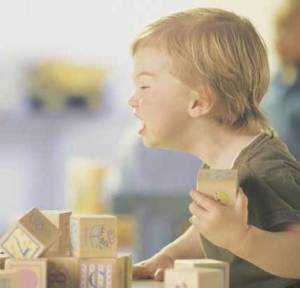This “classic tantrum scene” has probably happened to you at the mall. You pass by a toy store and there goes Spider Man staring at your 3-year-old in the face. “Mom, I want Spider Man.” And like any loving mom who wants to impose discipline on her child you say, “Sorry, not today.” Then your son does a monologue consisting of the “I said I want Spider Man!” line. You said “NO” again and again and then your toddler started crying loudly and rolling on the floor in front of an audience. Because you didn’t want to get embarrassed, you gave in and took Spider Man home with you. Maybe your child’s tantrum scene didn’t exactly happen this way, but surely, your child has thrown a tantrum in front of you and others.
To understand why your toddler throws a tantrum, let us first understand what tantrums are. According to Emily DeJeu (2013) there are three kinds of tantrums – frustration tantrum, exhaustion tantrum and temper tantrum. Understanding these three kinds of tantrums will help you prevent them from happening.
A Frustration Tantrum is the kind of tantrum your child throws when he is learning a new skill and struggles so hard while he is at it. He gets frustrated because he was trying to form a tower and yet the blocks toppled over. Also, according to DeJeu, a frustration tantrum happens when you say “NO” to your child. When he wants something and you say “NO”, he gets frustrated and throws a tantrum.

To prevent a frustration tantrum from happening again, here are two things you can do:
1. While your child is at play, he is learning skills, so give him words of encouragement when you see he is trying to work at something. You can say “You are doing a good job putting those shapes inside the sorter.” When he is having a hard time, assist him.
2. Enforce rules and stay firm with them. A “NO” is a “NO” and if your child understands that you mean what you say, frustration tantrums can be avoided.
An Exhaustion Tantrum is one that happens when your child is very tired. According to Laura Markham (2014), most tantrums happen when kids are hungry and tired. Thus, this type of tantrum happens at naptime or bedtime.

To prevent an exhaustion tantrum from happening again, let your toddler have the naps he needs during the day, and follow a bedtime routine and stick to it. When your toddler understands the naptime and bedtime routine, he would most likely feel sleepy at a particular time of the day. There has to be a good balance between playtime and rest time to prevent an exhaustion tantrum from happening.
A temper tantrum is also referred to by DeJeu as the “bad mood” tantrum and according to her, the kind that makes parents lose their minds because there is no real cause for such a tantrum. In my experience handling infants and toddlers, this, in my opinion is one that is done by a child just to get attention. You have to decide whether to act on it or just ignore it. As baffling as it may seem, this type of tantrum can be prevented from recurring.

To prevent a temper tantrum from happening again, Infant and Toddler Health (2012) suggested that you let your child make choices. You can ask “Would you like to play with blocks or would you rather paint today?” This allows your child to express what he wants instead of you insisting on what you want him to do. However, when you notice your child is throwing a tantrum just so he can get what he wants, be firm when you said “NO” and have the strength to ignore him. What I do when someone throws a temper tantrum in class and is being difficult is say “I will attend to you when you are not crying anymore,” and ignore the child completely until he has met my condition. It works.
Dealing with tantrums and preventing them from recurring are daunting tasks for parents. The key is to be the person of authority. Remember that you are the adult, you control your child and not the other way around.
References:
DeJeu, Emily (2013). 5 Tips for How to Handle Your Toddler’s Temper Tantrums (Especially Sleep-Time Tantrums). The Baby Sleep Site. Retrieved on November 18, 2014. Retrieved from http://www.babysleepsite.com/toddlers/how-to-handle-your-toddlers-temper-tantrums/#.VGoNL2fCXEk
Markham, Laura (2014). Managing Your Toddler:TANTRUMS. Aha! Parenting. Retrieved on November 18, 2014. Retrieved from http://www.ahaparenting.com/ages-stages/toddlers/toddler-tantrums
Temper Tantrums in Toddlers: How to keep the peace. Infant and Toddler Health. Mayo Clinic. Retrieved on November 18, 2014. Retrieved from http://www.mayoclinic.org/healthy-living/infant-and-toddler-health/in-depth/tantrum/art-20047845?pg=1
